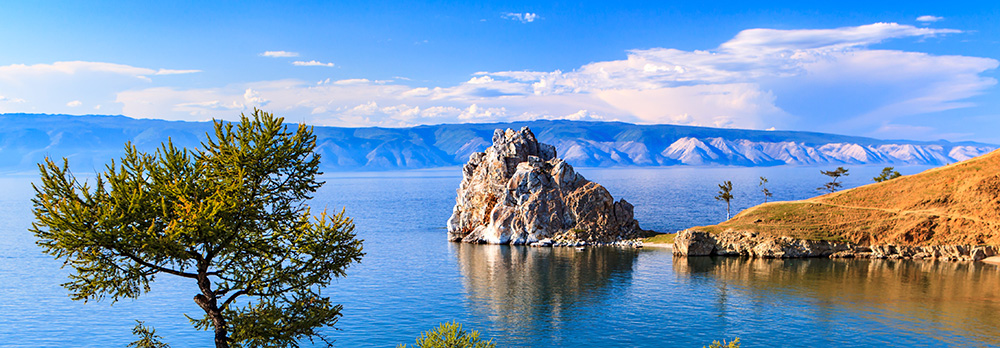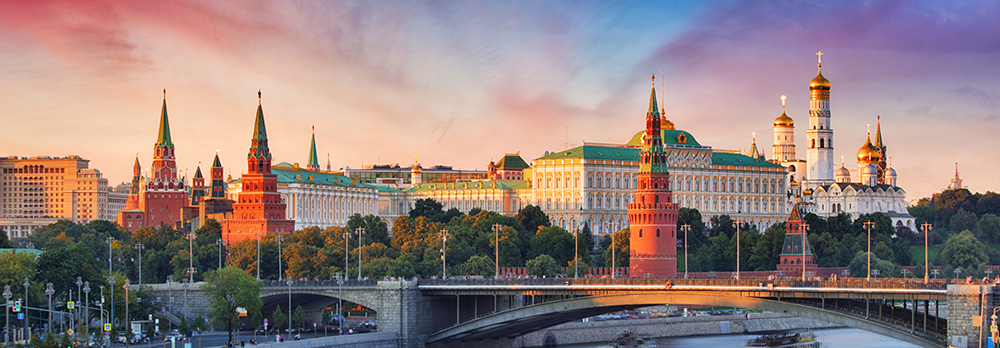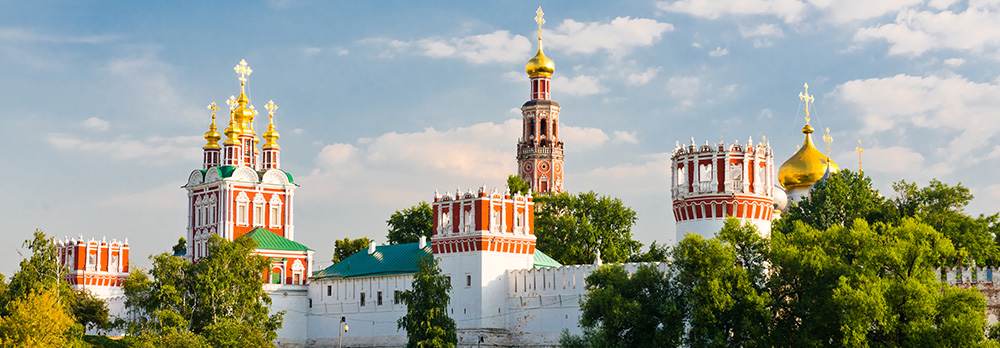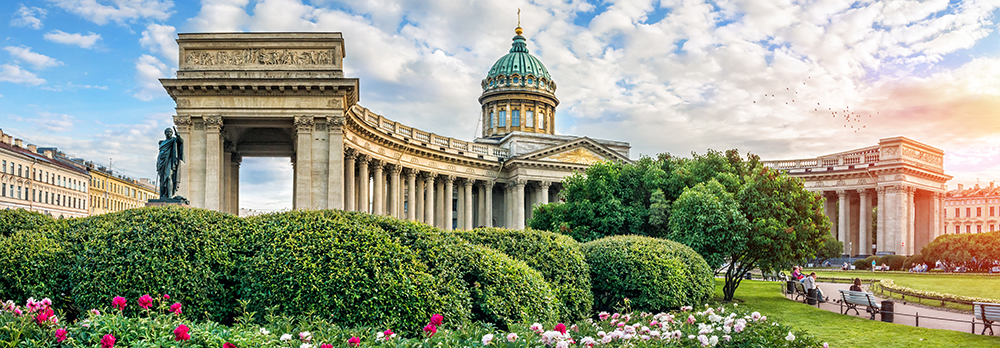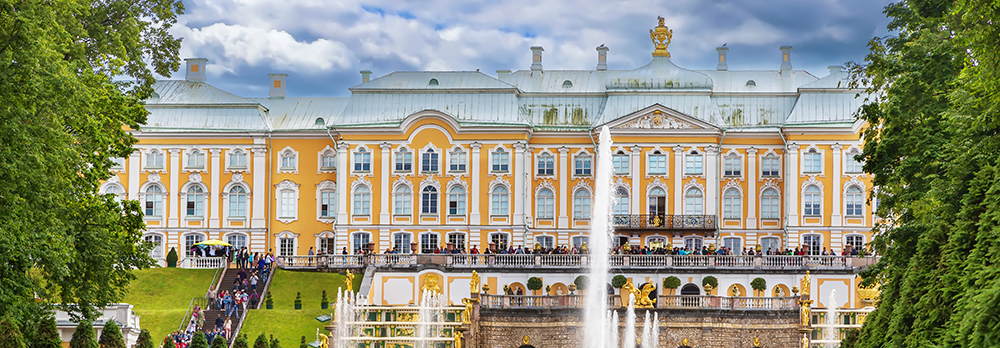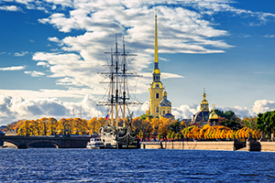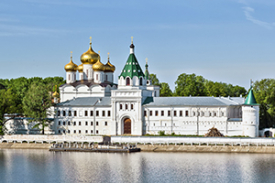- In Russia
- Saint Petersburg
- Moscow
- Golden Ring
- Kazan
- Yekaterinburg
- Irkutsk
- Vladivostok
- Nizhny Novgorod
- Petrozavodsk
- Murmansk
- Kaliningrad
- Sochi
- In Belarus
- In Armenia
- In Georgia
- In Uzbekistan
- Excursions in Moscow
- Excursions in Saint Petersburg
- Hotels in Moscow
- Hotels in Saint Petersburg
- Transfers in Moscow
- Transfers in Saint Petersburg
News
17 April 2024
The long-awaited event for residents and guests of the city - the beginning of navigation in St. Petersburg! This year navigation will start on the 27th of April. It means that from the 27th of April it will be possible to enjoy excursions along the rivers and canals of the city again.
22 March 2024
MIR Travel Company will tell you where and how to get there! The excursion is called the Golden Ring of Russia and passes through several Old Russian cities. The route itself was developed in 1967 with the inclusion of 8 cities: Sergiev Posad, Pereslavl-Zalessky, Rostov the Great, Yaroslavl, Kostroma, Ivanovo, Suzdal and Vladimir.
- Main
- /
- Group tours
- /
- Classic tours
- /
- MOSCOW AND THE GOLDEN RING
MOSCOW AND THE GOLDEN RING
Moscow – Vladimir – Suzdal – Kostroma – Yaroslavl – Rostov – Moscow
8 Days / 7 Nights
DAY 1. MOSCOW
Upon arrival in Moscow, you are provided assistance of local English-speaking guide.
Transfer to the hotel.

DAY 2. MOSCOW
Enjoy city tour of a vibrant capital of Russia, visit historic Red Square where important, turning point events have taken place. Visit the colorful onion-shaped domes of St. Basil’s Cathedral.
DAY 3. MOSCOW
This day is dedicated to Moscow Kremlin. Your guide will show you the territory with the Tsar Bell, the Tsar Cannon, and one of the most important Russian orthodox cathedrals.
This afternoon is a walking tour of Moscow city centre and metro. Moscow metro was constructed in 30-s of the XX c. old stations look like underground palaces. Soviets did not save money on the design of the stations; metro was a symbol of Soviet People’s achievements.
 DAY 4. MOSCOW
DAY 4. MOSCOW
The Kremlin in Izmailovo is a unique cultural and entertainment centre in Moscow, built in a pseudo-Byzantine style, based loosely on what palaces in Russia looked like in pre-Petrine times, but more inspired by drawings of Russian fairy tales. This complex is used for civil weddings as it has a wedding palace, a restaurant and bars. However, it is also used as an amusement park and open-air museum on the theme of «Old Russia». There is also a big souvenir and flea market.
 DAY 5. VLADIMIR – SUZDAL
DAY 5. VLADIMIR – SUZDAL
Departure from Moscow to Vladimir.
Arrival in Vladimir. City tour round Vladimir including visits to Cathedrals of Assumption and St. Dmitry, The Golden Gate and Museum of Crystal, lacquer miniatures. Transfer to Suzdal. Accommodation.
DAY 6. SUZDAL – KOSTROMA – YAROSLAVL
Breakfast at the hotel.
Sightseeing including the Kremlin, the Cross-Chamber, Spaso- Yevfimiev Monastery. Departure from Suzdal to Kostroma. Arrival to Kostroma. City tour. During the city tour, you will get acquainted with history of this city, which, like Moscow, was founded by Prince Yuri Dolgoruky in 1152.

Today Kostroma is the only city in Russia which has retained the layout and architectural ensemble formed in its central part during the XVIII - early XIX centuries. Kostroma used to be the cradle of the house of Romanov’s dynasty. It was in the Ipatiev Monastery that 16-year-old Mikhail Romanov got the news that he had been elected Tsar of Russia. The Ipatiev Monastery founded around 1330 is located at confluence of two rivers — the Volga and the Kostroma River. The monastery was first mentioned in chronicles in 1435. Its architectural ensemble was formed during XVI-XIX centuries. Since the middle of the XVI century, the monastery entered the period of prosperity, the development being attributed to rise of the Godunovs who used to give great donations to the monastery. Stone construction subsidized by the Godunovs was under way there. With the Godunovs support, a school for icon painters was set up in the monastery. Most renowned masters were Gury Nikitin and Sila Savin. After the fall of the Godunovs the Romanov dynasty became the monastery patrons. Transfer to Yaroslavl. Accommodation.
 DAY 7. YAROSLAVL – ROSTOV-THE-GREAT
DAY 7. YAROSLAVL – ROSTOV-THE-GREAT
Breakfast at the hotel.
Yaroslavl is an ancient town located 260 kilometers northwest of Moscow. Yaroslavl is known all over the world as the treasure of Russian Culture. During the city tour you will visit the Church of St. Elijah the Prophet, the Savior-Transfiguration Monastery. The Church of St. Elijah the Prophet built in 1647-50 stands on Elija (presently Sovetskaya) Square, which has long been the center of the city. The church is a fine example of Yaroslavl architectural style of the XVII century. It was erected for one of the richest and most influential Russian families of that time. The asymmetrical structure of the five-dome church with the bell-tower came down to our days unchanged. The chief treasures of the church - its frescoes - have been preserved in excellent condition. The frescoes were executed in 1680-81 by of icon-painters team headed by Gury Nikitin and Sila Savin of Kostroma. The church frescoes — vibrant, colorful, and optimistic — are possibly the greatest achievement of monumental art in Yaroslavl. It should be noted that, in spite of their religious subject matter, the frescoes are a unique encyclopedia of Russian life in the XVII century. The carved gilded iconostasis with a collection of most ancient icons, and splendid church-plate add to the beauty of the interior decoration of the church. The church is part of the Yaroslavl History, Architecture and Art Museum-Preserve.
In the central part of the city is the Monastery of the Transfiguration of the Savior founded in the late XII century, its structures dating back to XVI-XIX centuries. Located near the main river crossing it guarded the approaches to the town. In the XIII century, when the independent Yaroslavl principality was formed, the monastery became a burial place for the Yaroslavl princely dynasty. The monastery ensemble includes the Cathedral of the Transfiguration, built in 1505-16, its frescoes dating back to 1563-64, the Holy Gate (1516), the Belfry (1516), and the Refectory Chamber with the Refectory Church of the Nativity of Christ. In XV-XVII centuries the monastery was one of the largest and richest in Russia, and in the XVI century, after the stonewalls and towers had been erected, it became one of the strongest fortresses in the area beyond the Volga.
Transfer to Rostov–the-Great.
Rostov-the-Great — the oldest town of Russia — is known from the 9th century. This town is situated on the banks of picturesque Nero Lake. Principal attractions in Rostov are marvelous well- preserved architectural monuments of the XV-XVII centuries. One of the most interesting sights of Rostov is the ensemble of the Metropolitan House, or the Rostov Kremlin (1670-83). Adjacent to the Kremlin wall is a town square with imposing five- dome Cathedral of the Assumption (1589). Next to the cathedral stands a four-dome belfry with fifteen famous Rostov bells cast in the XVII-XIX centuries, with the biggest bell «Sisoy» weighing 2,000 pounds. A peculiarity of the lay-out of the Metropolitan`s House courtyard is that all the principal churches and chambers — the Red Chamber, the White Chamber with its Church of the Savior above the Cellars, Prince`s Chambers, Samuil`s House and other structures — are incorporated into the Kremlin wall or are adjoining it, and look out onto the central courtyard. Like in a medieval fortress, one can get into all the churches and other buildings of the Kremlin just walking along the wall ways without descending onto the ground. The State Museum of the Rostov Kremlin was established in 1883 as a museum of church antiquities. It comprises architectural monuments of the Kremlin and several museum exhibitions. One of them is the exhibition of the Russian enamel. Departure to Moscow.
DAY 8. MOSCOW
Transfer to the airport.



